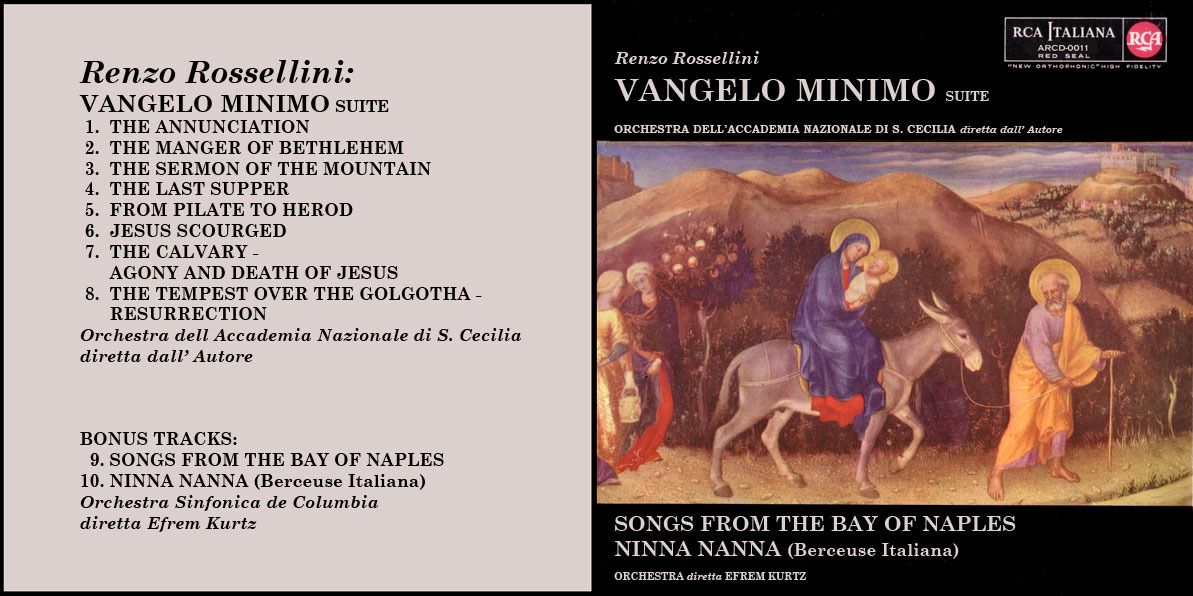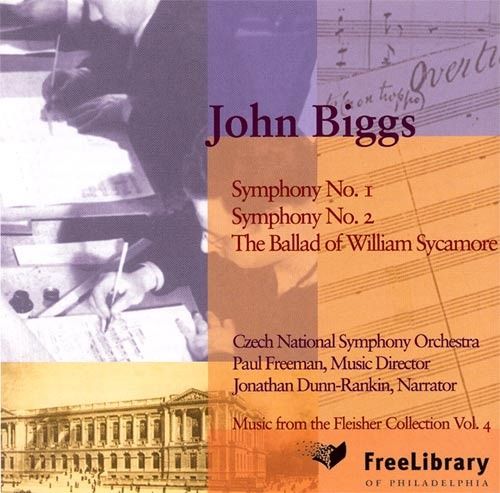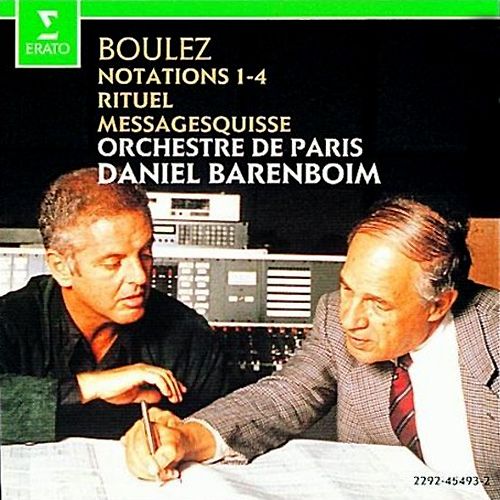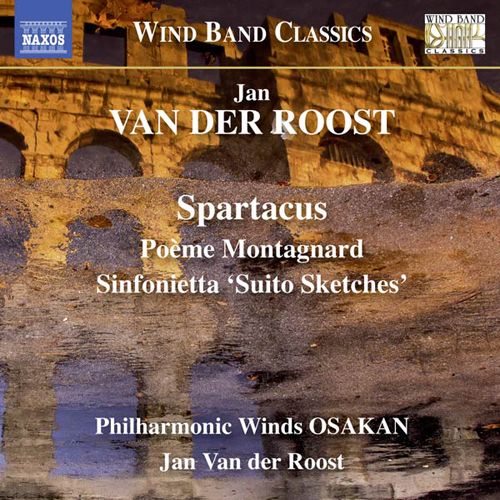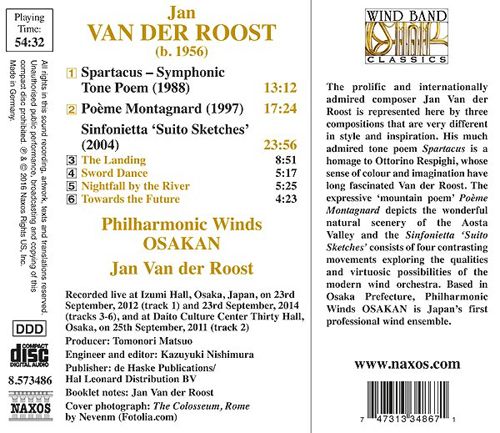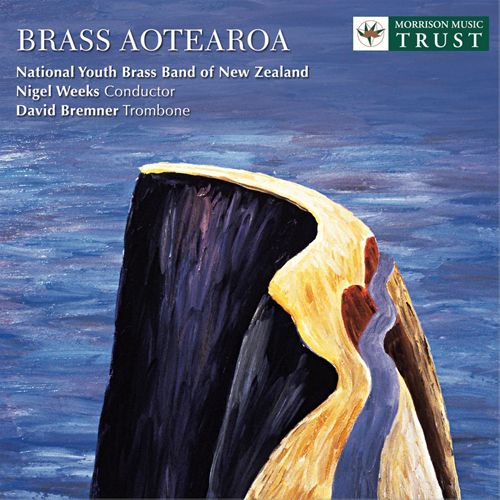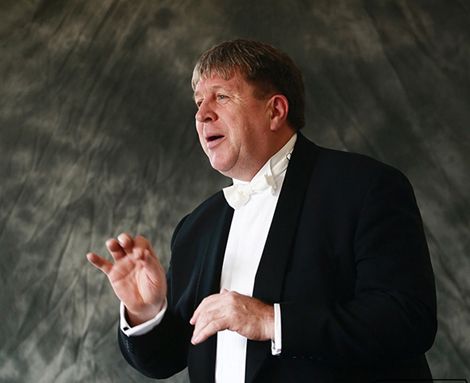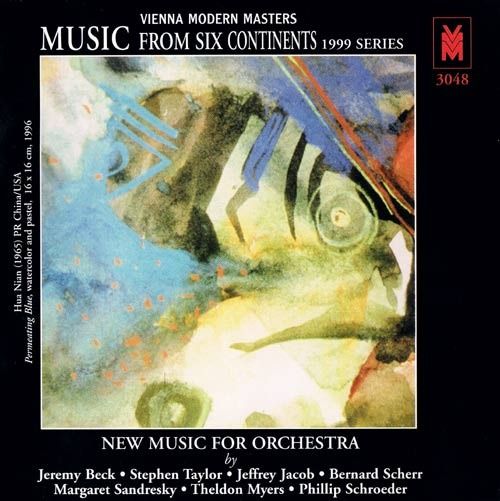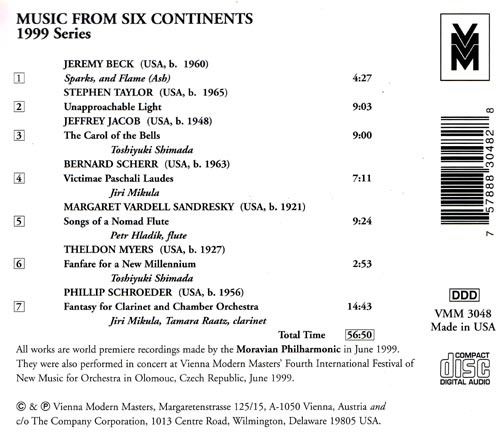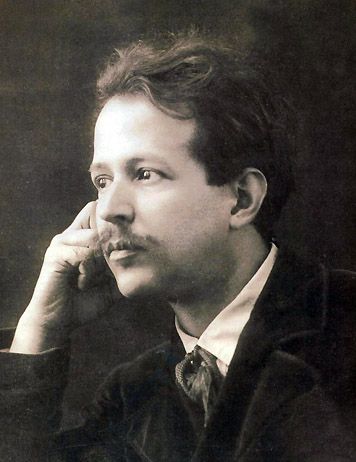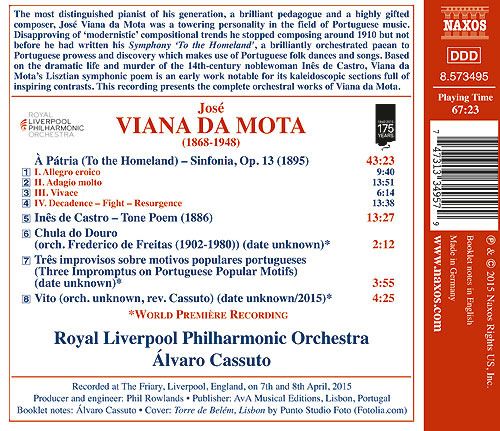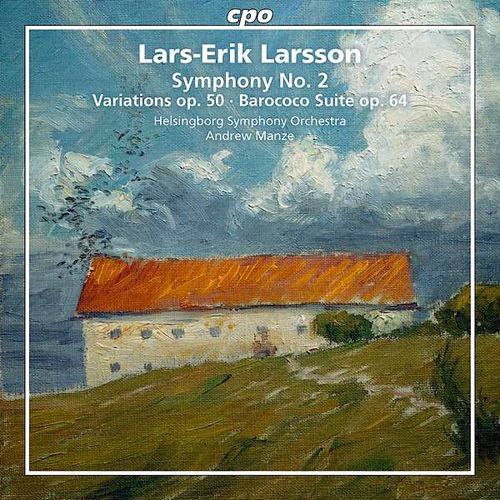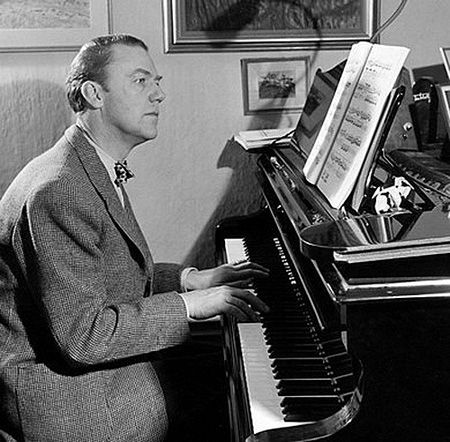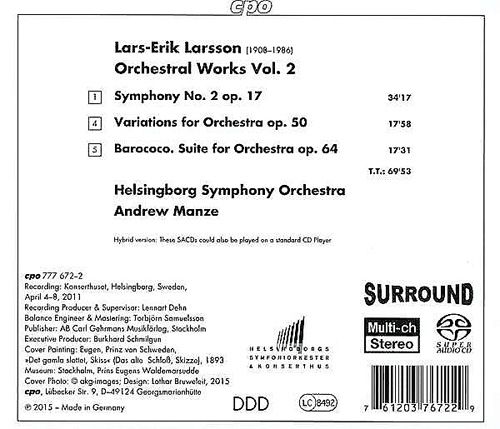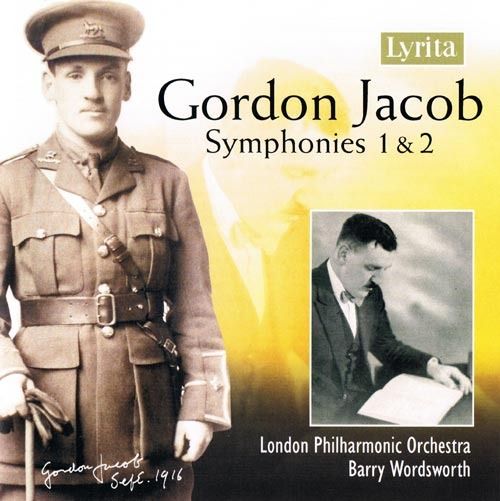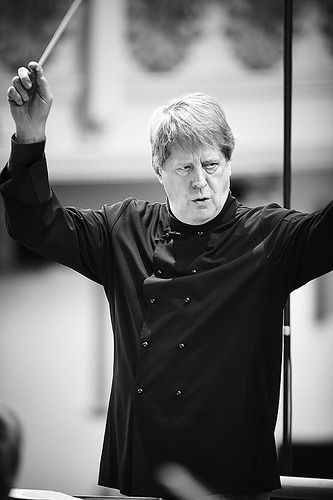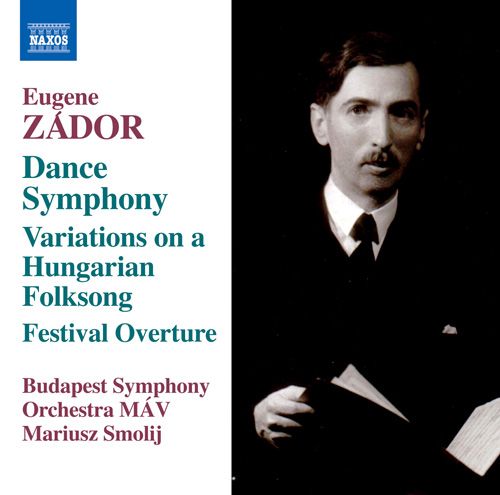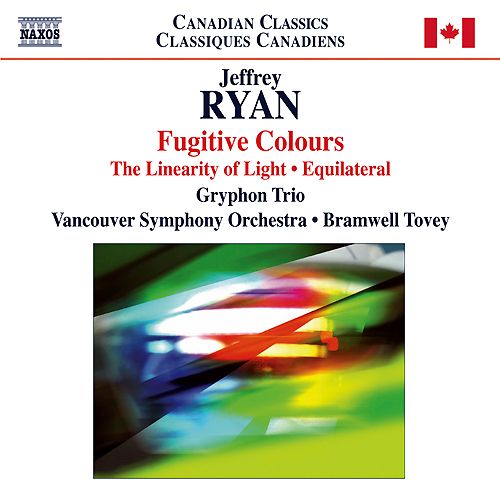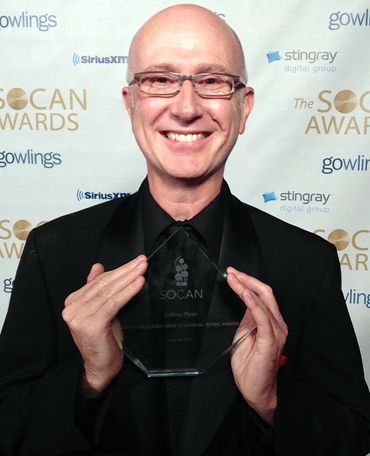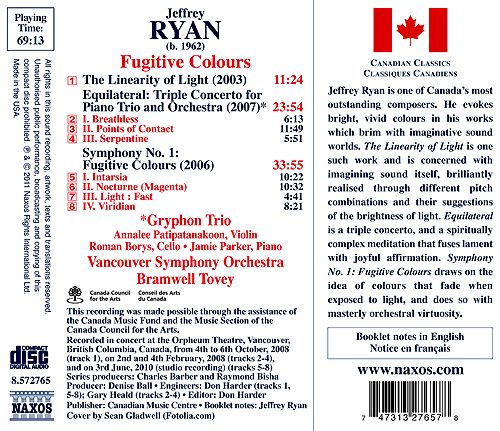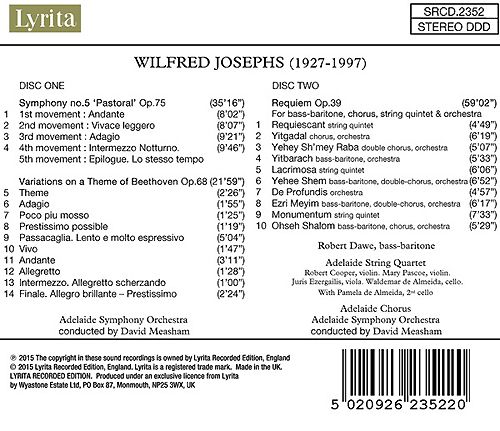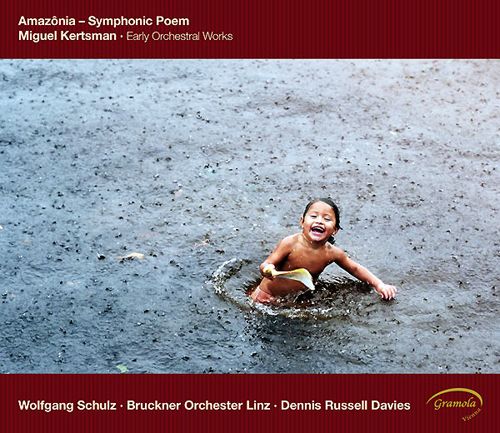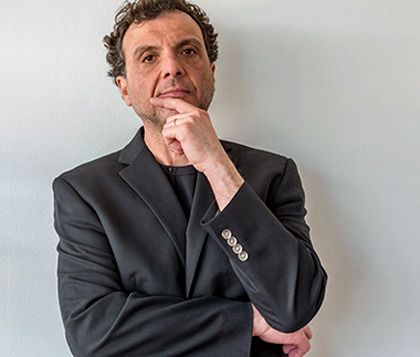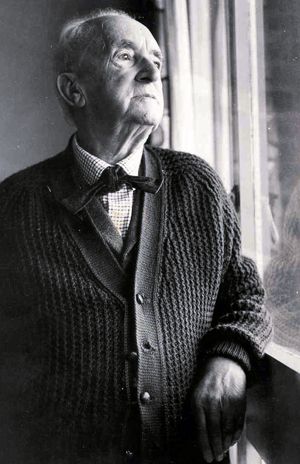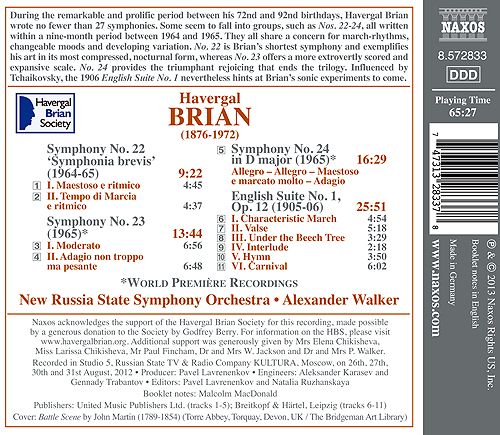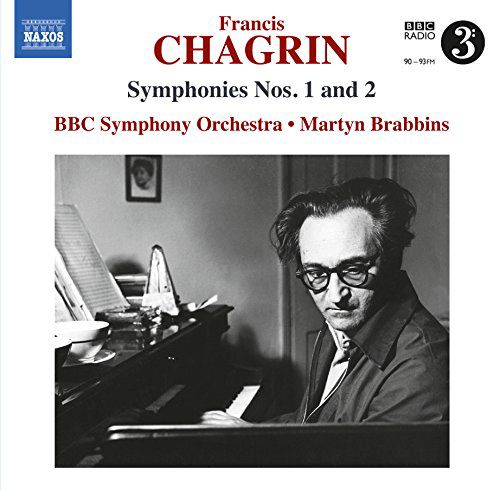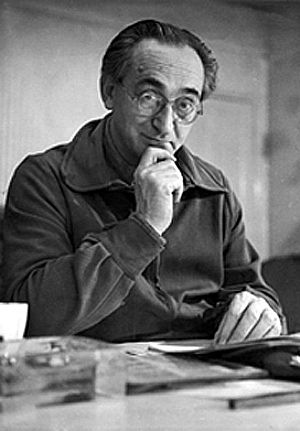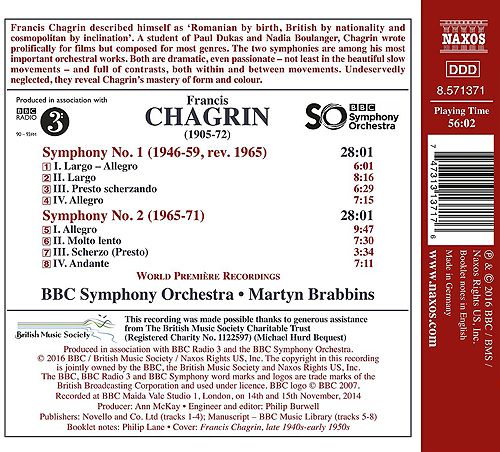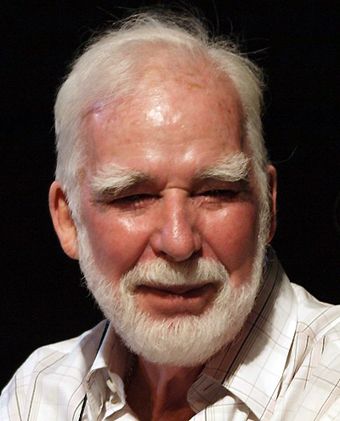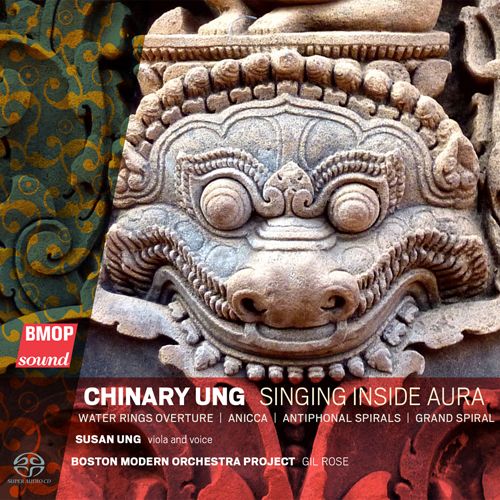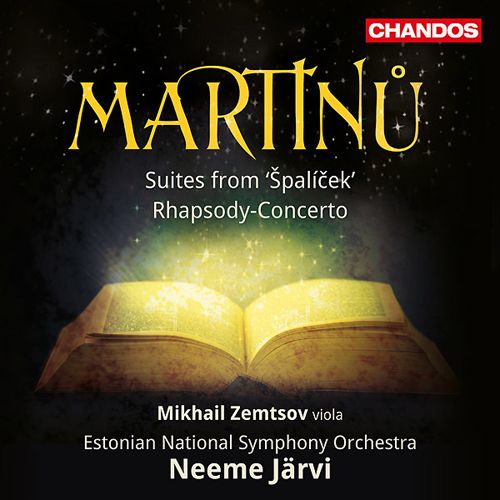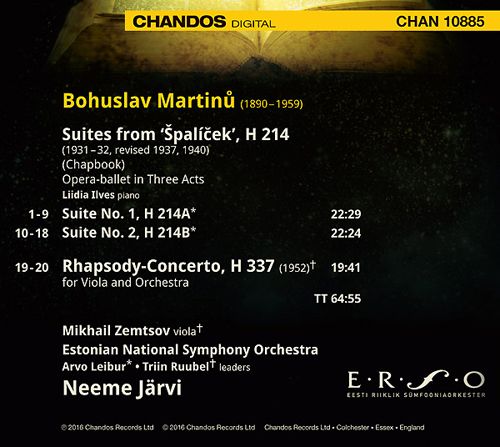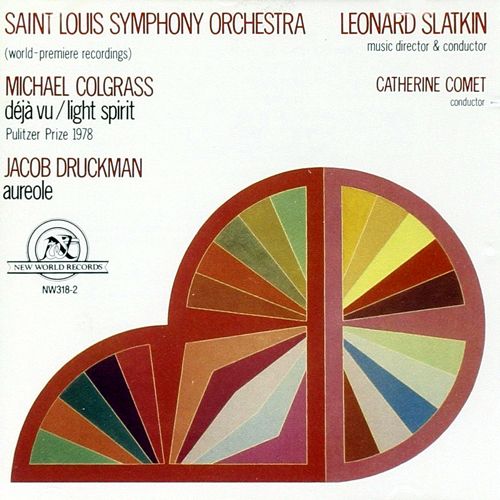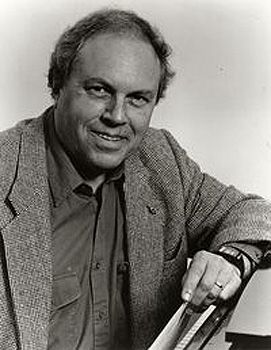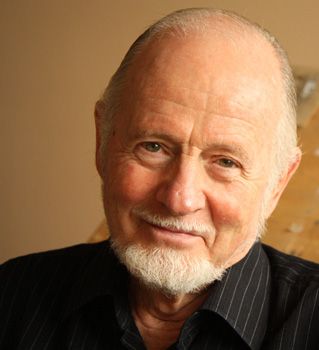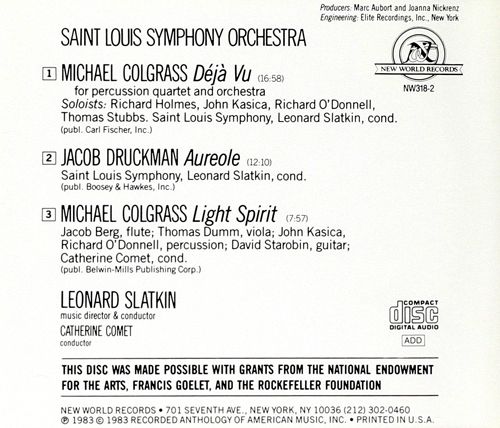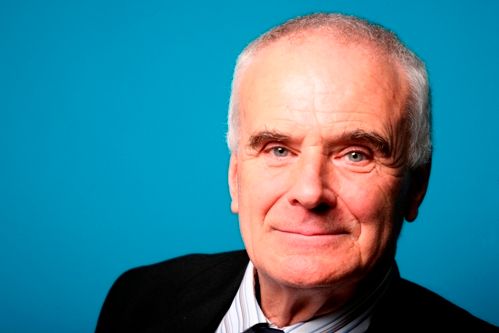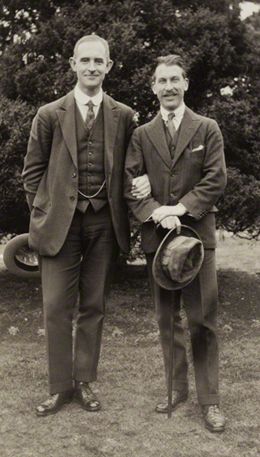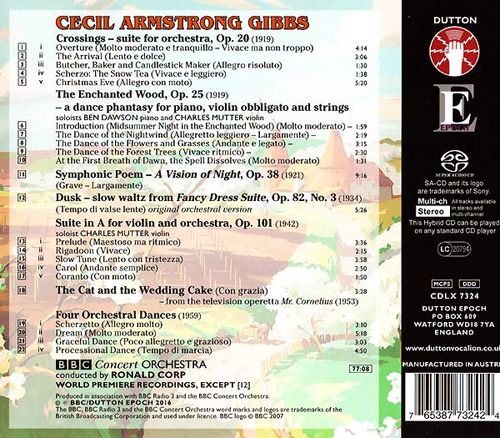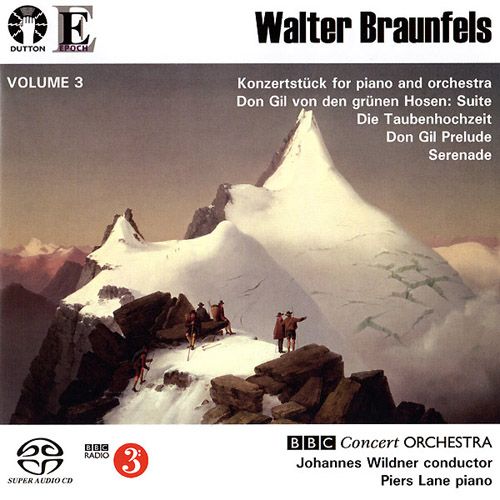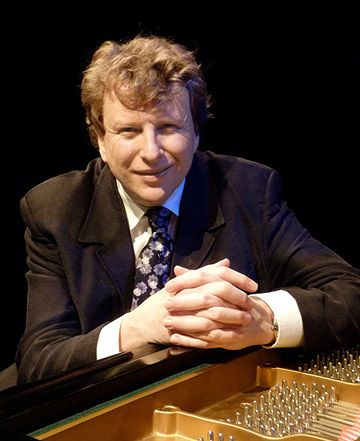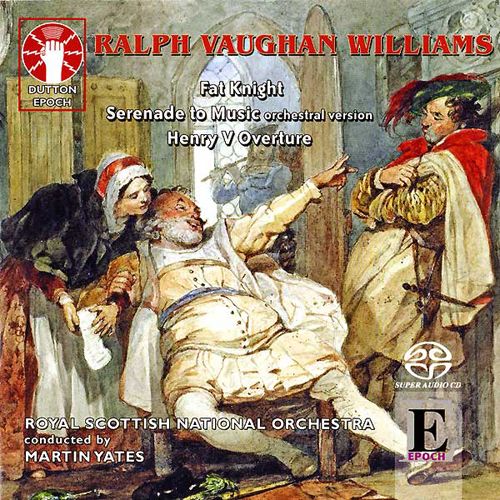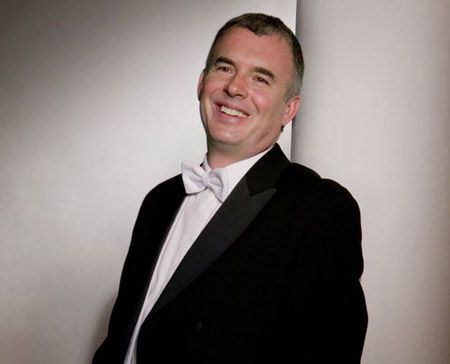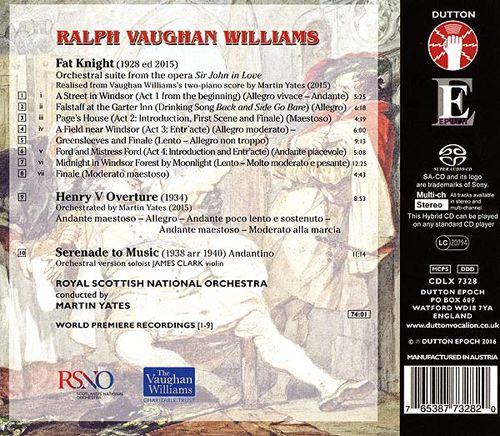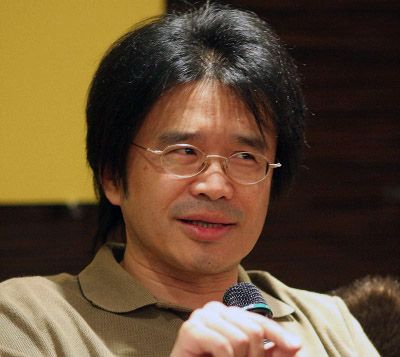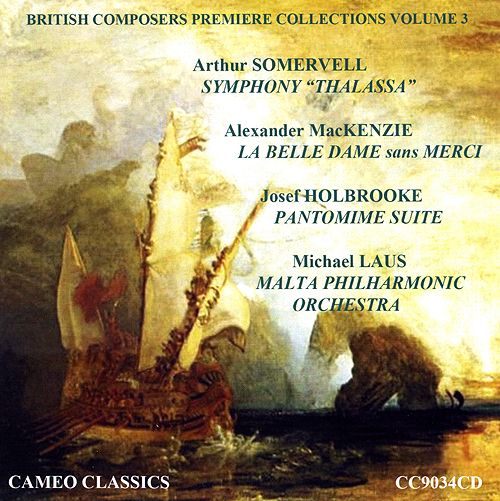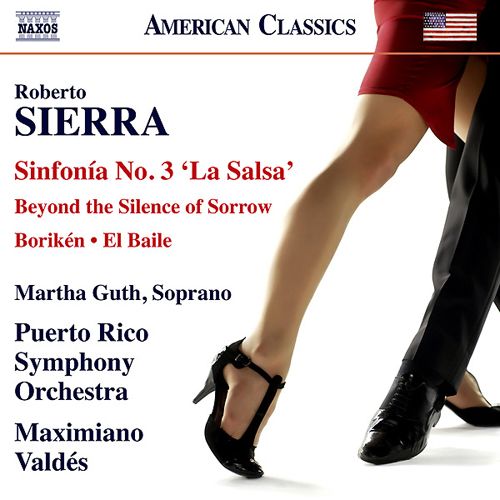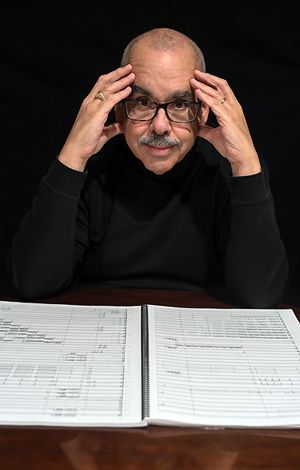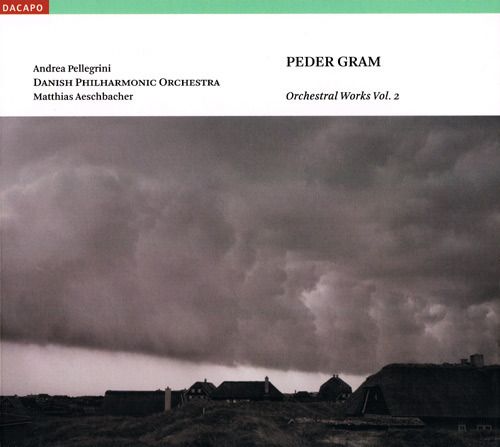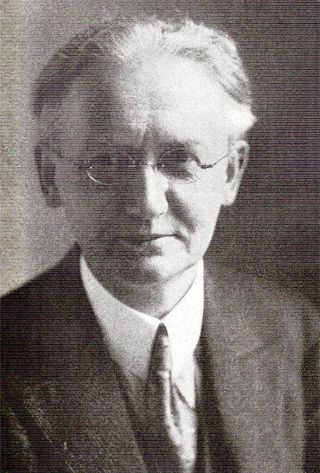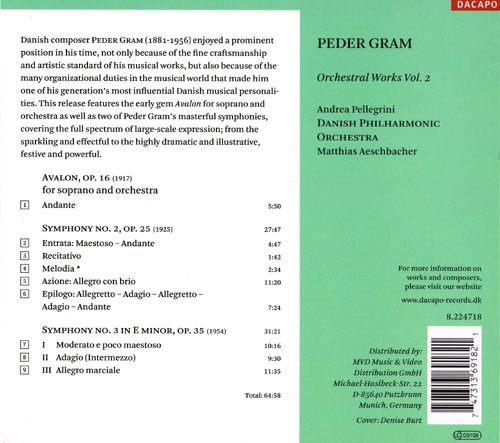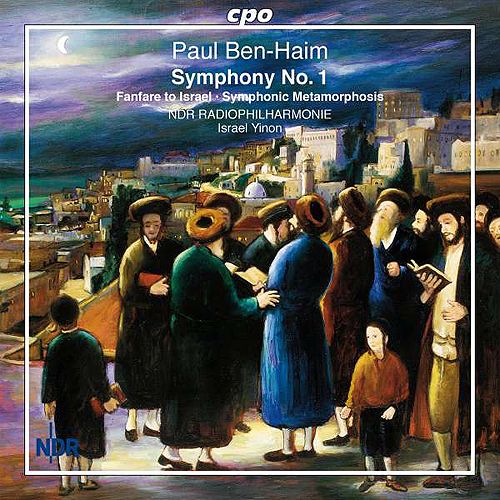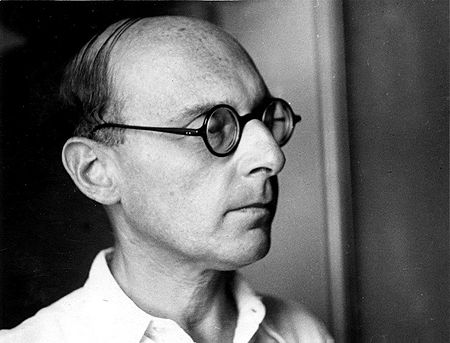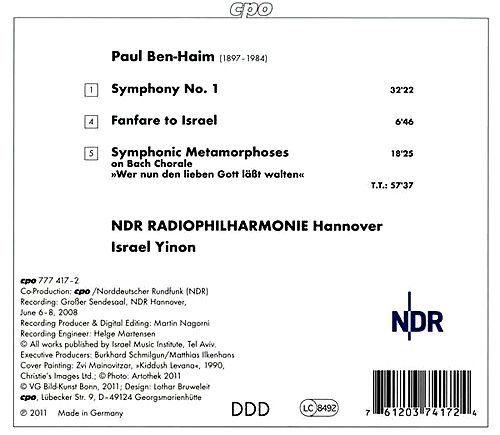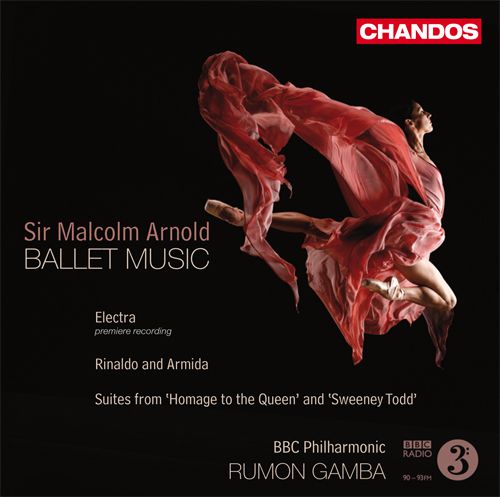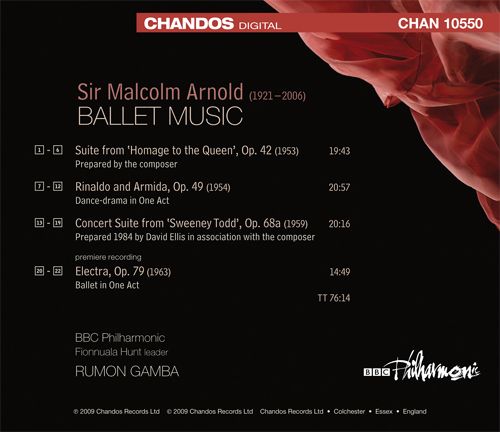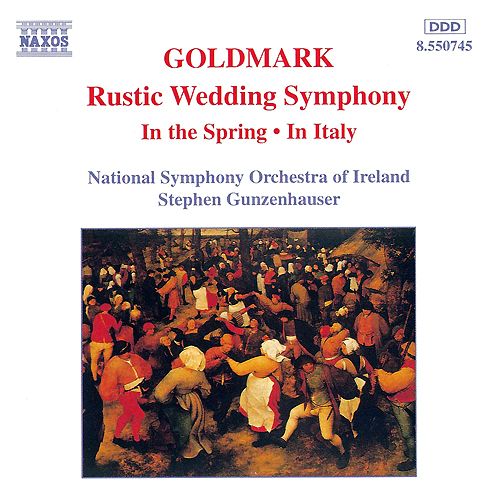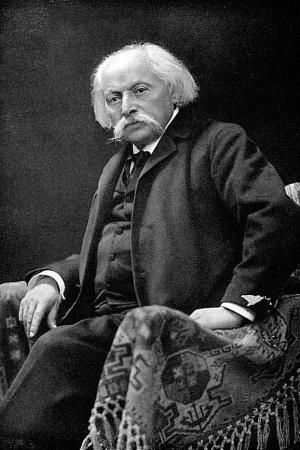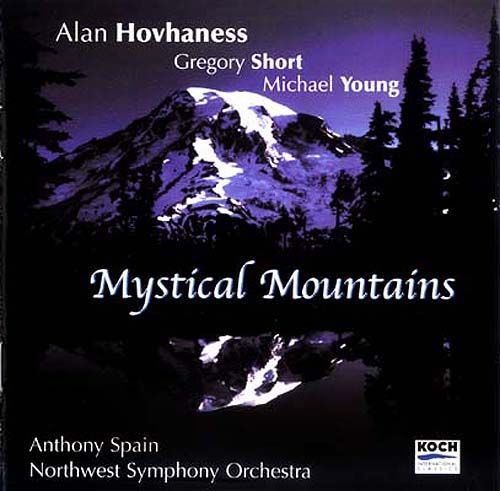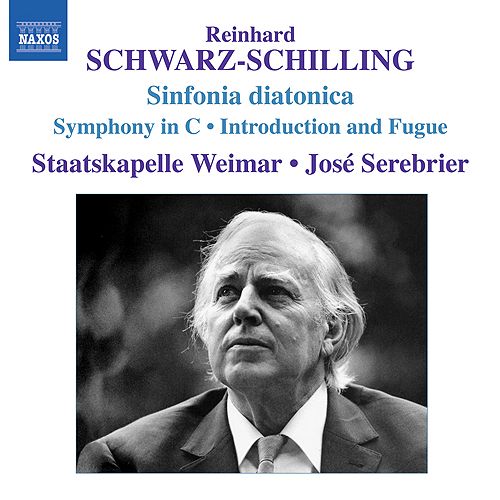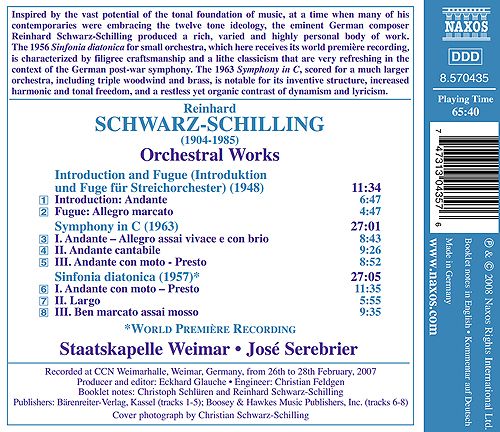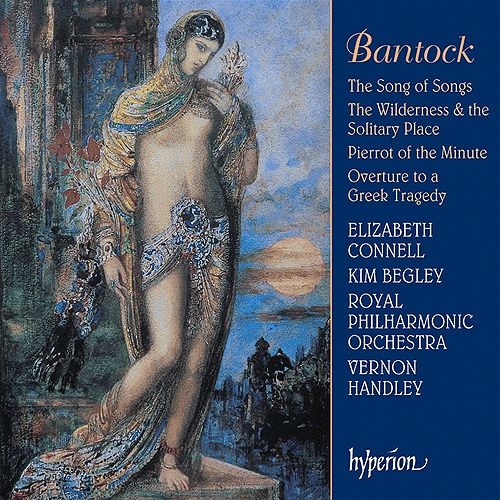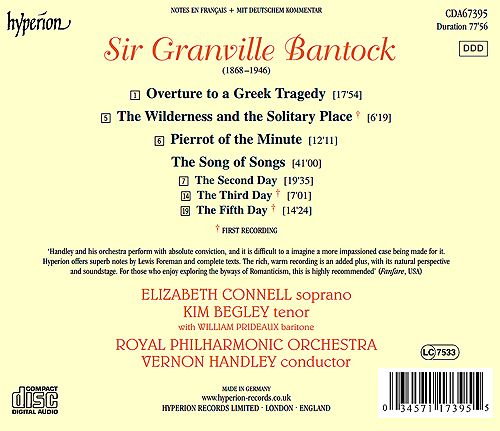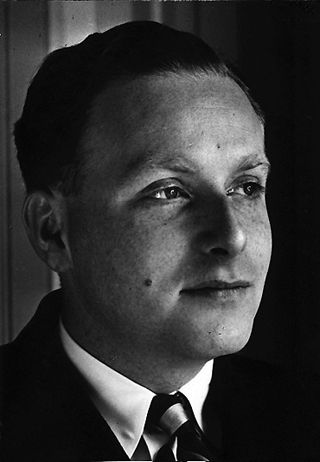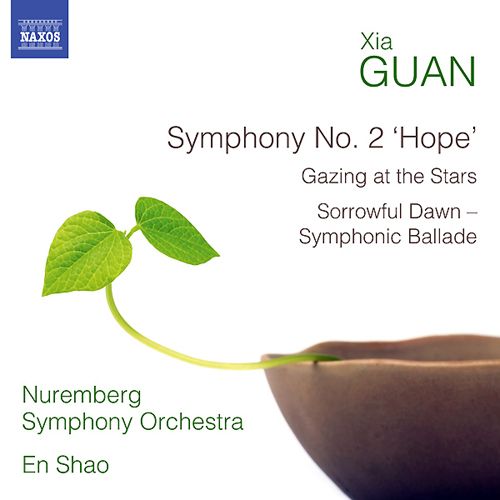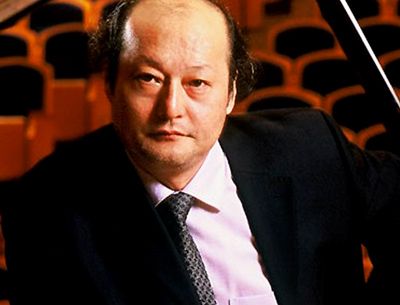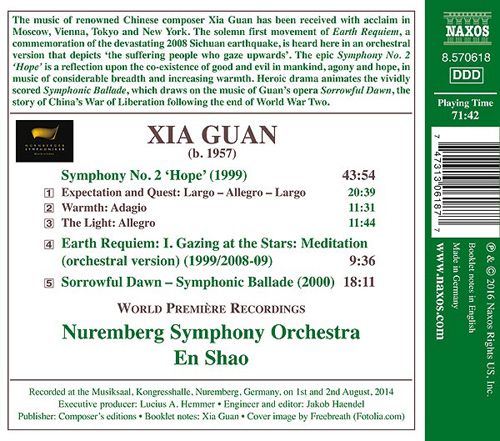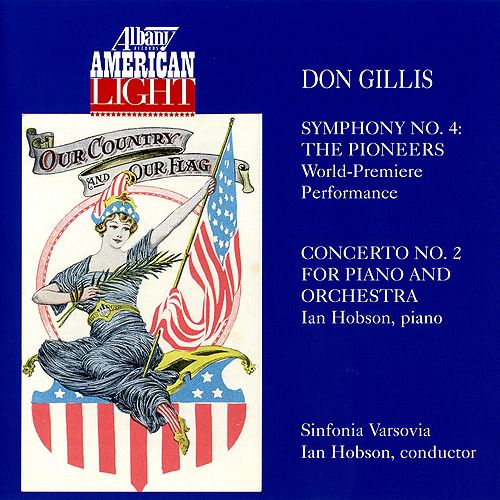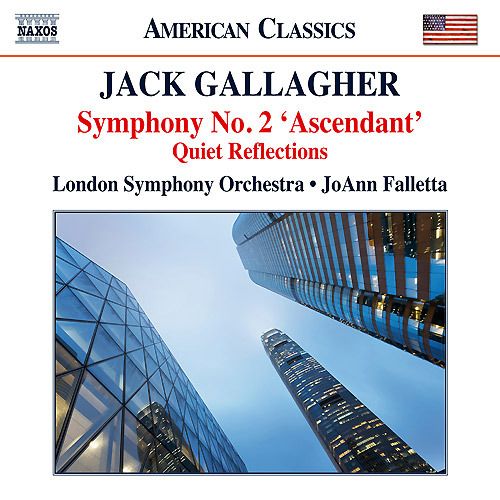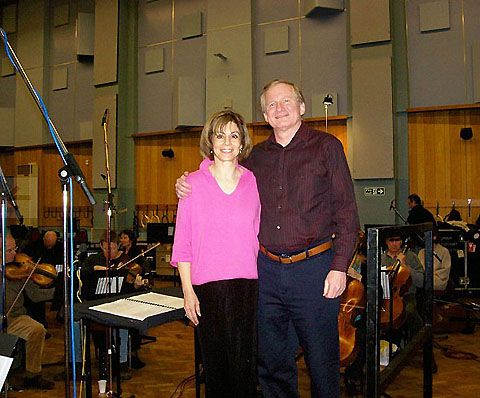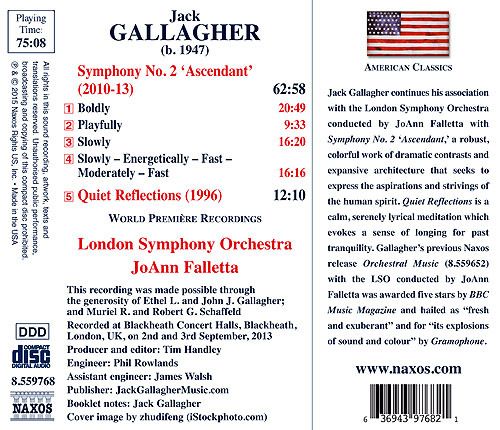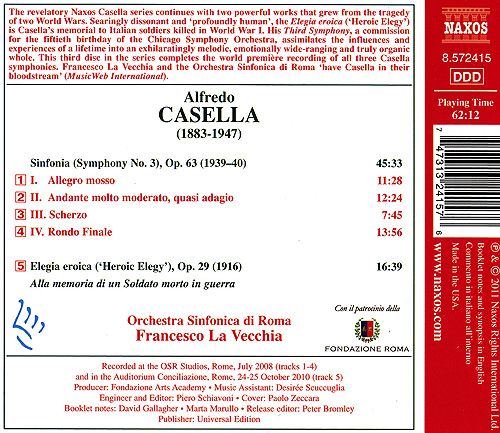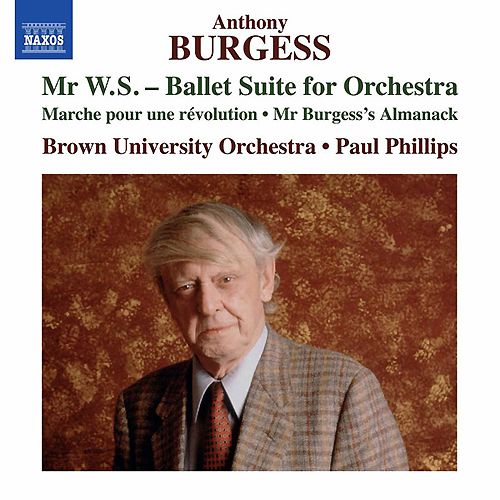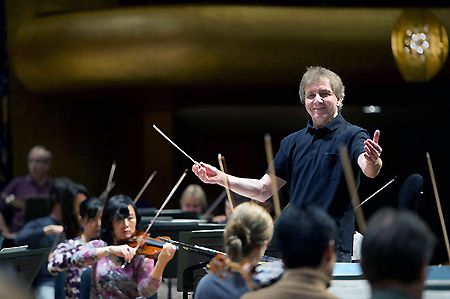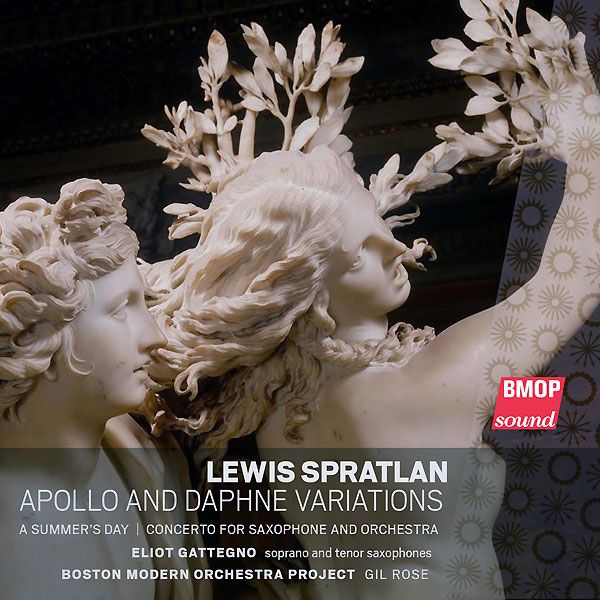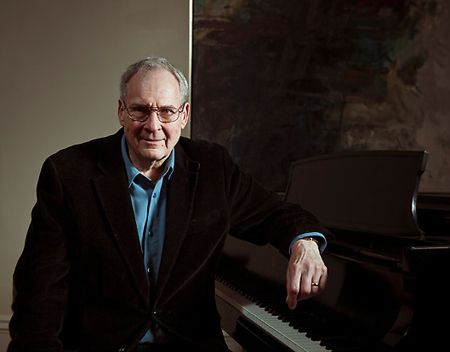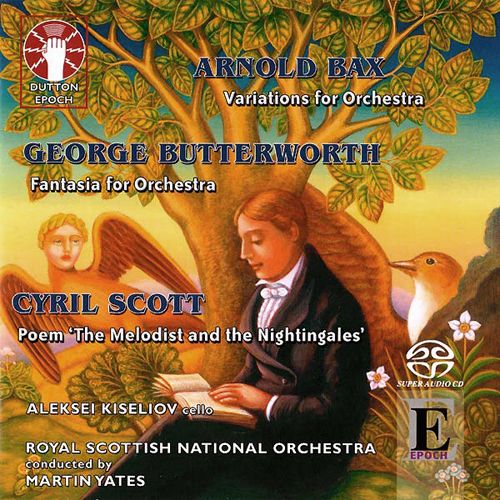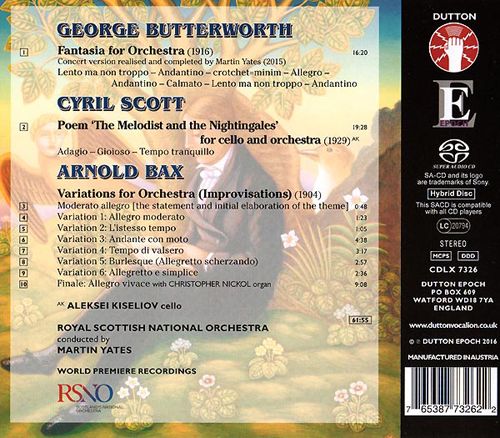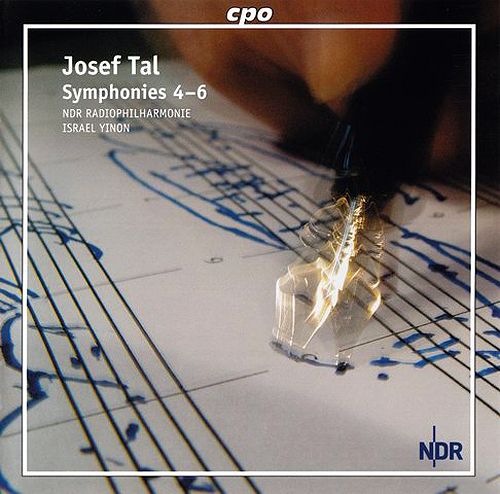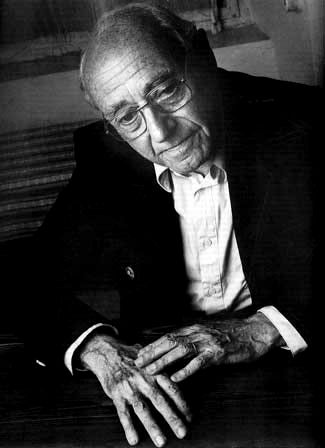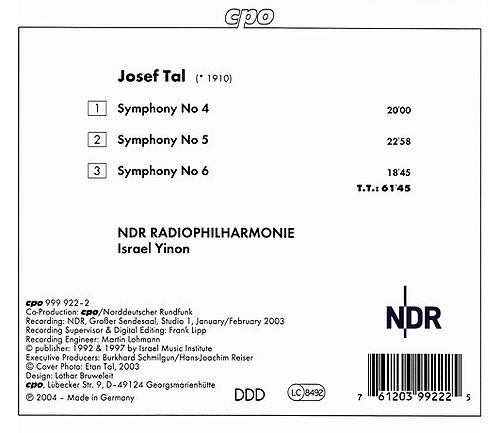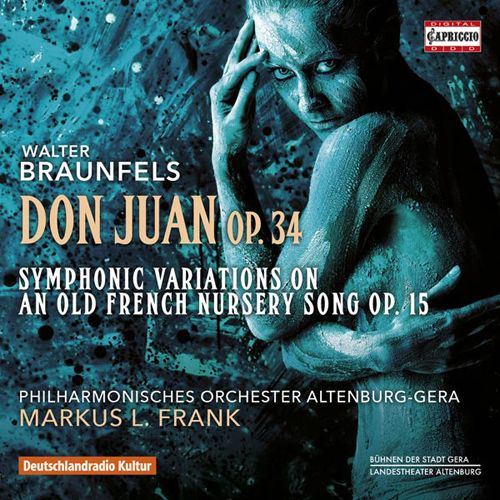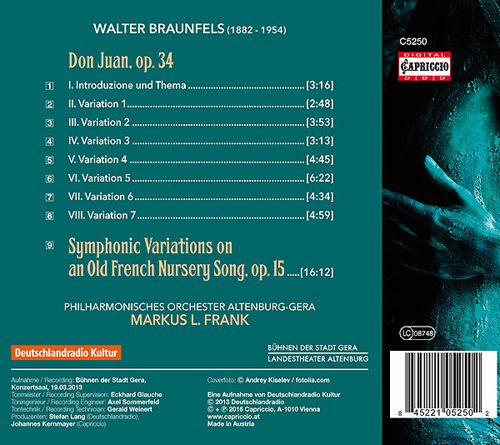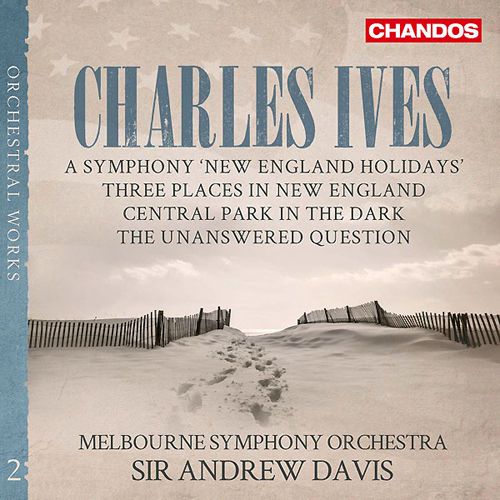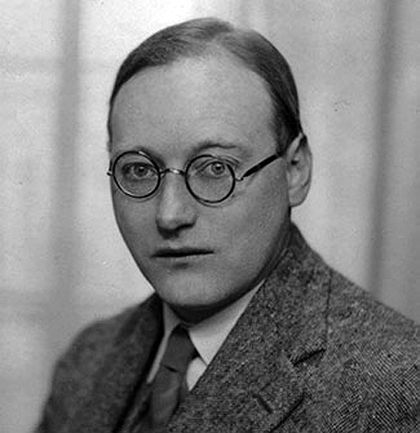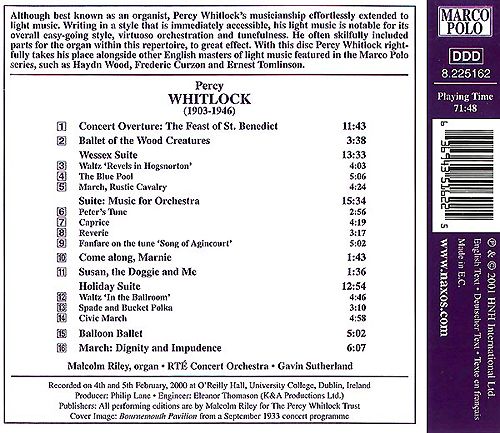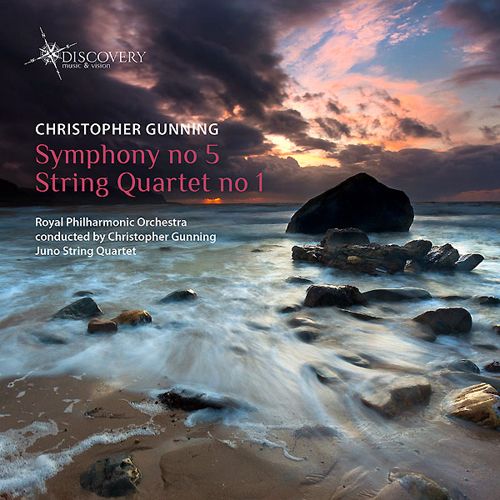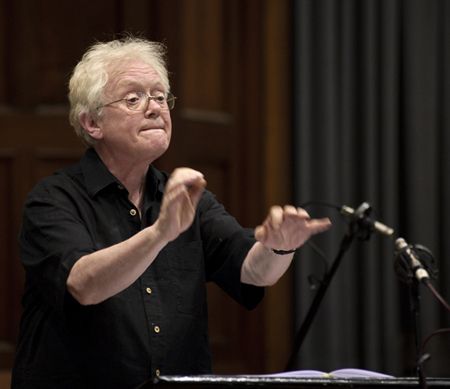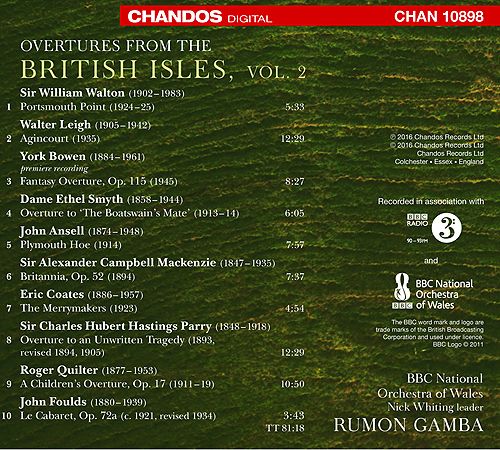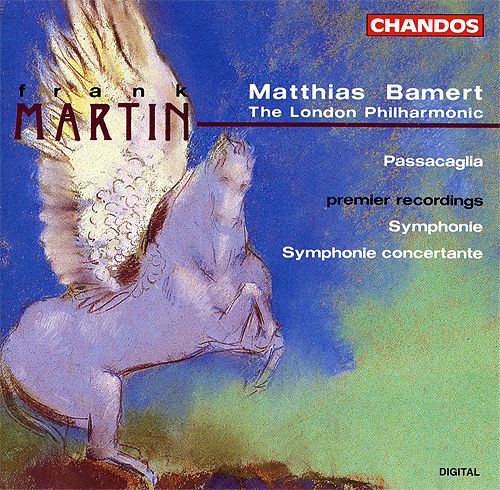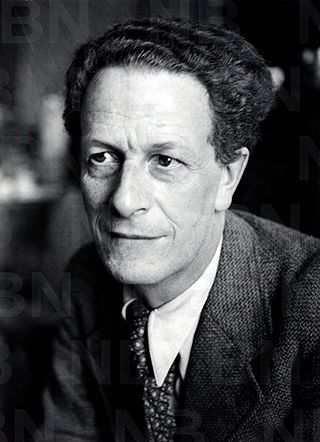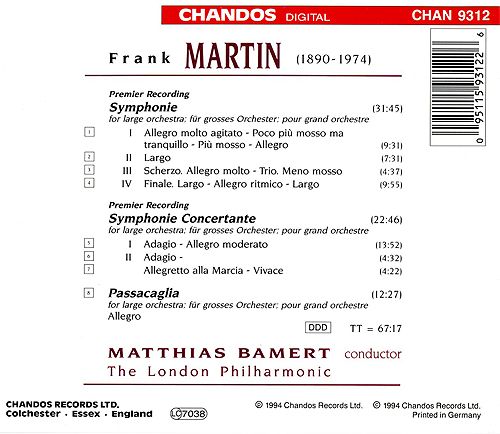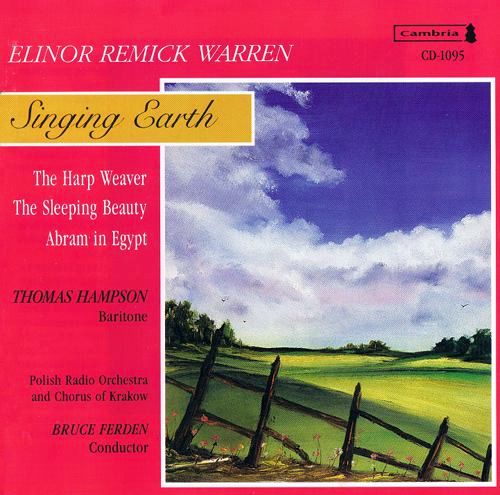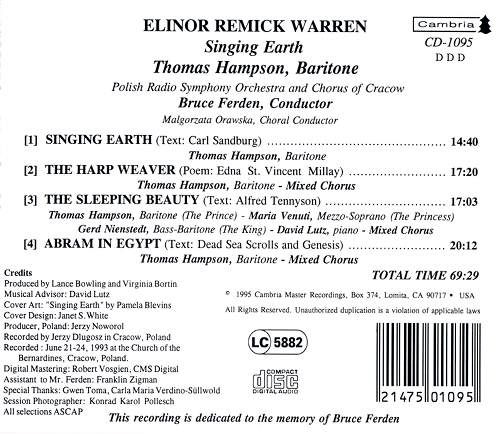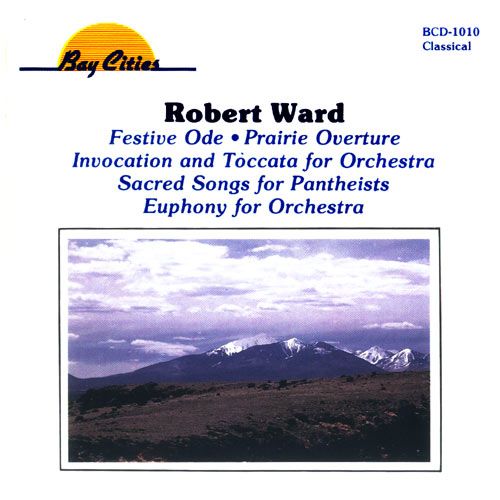No.868
Modern: Tonal
The �romantic avant-gardism� of Barcelona-born Leonardo Balada pairs complex
techniques with a very direct emotional impact. These characteristics have often been
employed in exploring the impact of historical events, none more so than the wars of
the 20th century. Symphony No. 6 �Symphony of Sorrows� (Dedicated to the
Innocent Victims of the Spanish Civil War) embeds traditional melodic ideas in a
coruscating single-movement exploration of the tragedies of war. The Steel Symphony
reflects the sonorities�in an abstract, non-programmatic way�of Pittsburgh�s steel
foundries, while the Concerto for Three Cellos, inspired by Germany�s recovery
after two catastrophic world wars, combines complex techniques in a vivid work of
almost surrealistic transformations.
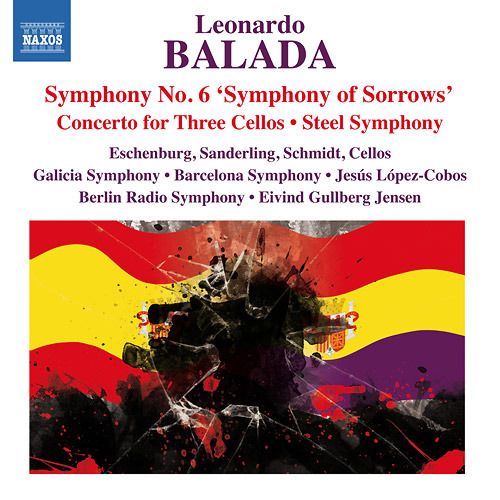
Music Composed by Leonardo Balada
With Hans-Jakob Eschenburg, Michael Sanderling & Wolfgang Emanuel Schmidt (cellos)
Played by the Galicia & Berlin Radio Symphony Orchestras
And the Barcelona Symphony Orchestra
Conducted by Eivind Gullberg Jensen & Jes�s L�pez-Cobos
"Every new disc of music by Leonardo Balada is a journey of discovery, not knowing
what style or content we are likely to find in this enigmatic composer. Having been
born in Barcelona in 1933, his mature education took place in the United States,
his inclination towards atonality in his younger years remaining through to his most
recent scores, including his Sixth Symphony composed in memory of those who died in
the Spanish Civil War. Juxtaposing the pleasures of childhood with the sudden blast
of fighting and turmoil, the composer states that it is not to a specific programme,
though the sections of the one-movement score are a chilling reminder of senseless
conflict. The Concerto for Three Cellos, subtitled A German Concerto, is not a
concerto in the usual sense, but a return to the same theme as the symphony, and
uses as thematic material a song brought by German volunteers who fought in the war.
As such it gives the solo trio moments of virtuosity, but their part is mainly a
concertante role. Steel Symphony is an ingenious score created from instrumental
sounds to picture a steel factory, and I can vouch for their authenticity. It must
take a great deal of rehearsal, and the Barcelona Symphony are to be congratulated
on the result. All three works come from �live� performances over the period 2007
to 2012, the sound is exemplary, and the Galicia Symphony perfectly capturing
the wide dynamic range. It provides a good starting point for those just coming
to this highly prolific composer."
David�s Review Corner


Source: Naxos CD (my rip!)
Formats: FLAC(RAR), DDD Stereo, mp3(320)
File Sizes: 295 MB / 139 MB (FLAC version incl. covers & booklet)
Download Link - [Click on the reputation button, leave a comment (or not) and PM me to get the FLAC link]
mp3 version -
https://mega.nz/#!aRJEwBLK!e1qBsByFHxgrgagKtH4c6bjJ4GGF74fyroo3mXOB2Ms
Enjoy! Don't share! Buy the original! And please click on "Reputation" button if you downloaded this album! :)
---------- Post added at 06:36 PM ---------- Previous post was at 05:41 PM ----------
No.869
Modern: Tonal
Komei Abe was born on 1 September 1911 in Hiroshima. He studied the cello with Heinrich Werkmeister
(1883-1936) at the Tokyo Music School (today's Music Department of Tokyo University of Fine Arts and Music),
at the time the best facilities in Japan for studying Western music. Abe formed a chamber ensemble and worked
on Beethoven's music in particular.
Abe played in the Music School's orchestra under conductor/composer Klaus Pringsheim who he admired.
Pringsheim, appointed professor at the Tokyo Music School in 1931, had been a pupil of Gustav Mahler and
had conducted operas in Geneva, Prague and Bremen in the 1910s, and a cycle of Mahler's symphonies with
the Berlin Philharmonic. Abe began to study German-style harmony and counterpoint with him, and decided
he wanted to become a composer, not a cellist. Abe was strongly influenced by this teacher's view and
knowledge of the late romanticism period represented by Mahler and Richard Strauss, and neo-classicism by
Hindemith and Kurt Weill.
At the age of 34 Abe had already written some works including several orchestral pieces, four string quartets,
one flute sonata, choral pieces and film music, and had established his name as a master neo-classicist.
In 1948 he was appointed music director of the imperial orchestra, a position he held for six years.
The ensemble performed waltzes and serenades for guests from foreign countries at parties held by the
Emperor. The members of the imperial orchestra however were originally musicians of Gagaku, performing
Japanese ancient music. From them Abe learned Japanese traditional music, with which he was not very
familiar in his younger days. It broadened the horizons of his compositional style.
Abe's works in the postwar days include Symphony No. 2 (1960), Clarinet Quintet (1946) and String
Quartets Nos. 5-15 (1947-1993). He died at the age of 95 in Tokyo, in the morning of 28 December
2006. His musical language is characterized by crisp melodies, structural clarity and, in the composer�s
own words, �rhythmic ostinato by the steam locomotive�. Written during his �vintage years� of the 1950s,
the Symphony No.1 and the Sinfonietta are scored for a large orchestra, including a wide
variety of percussion.
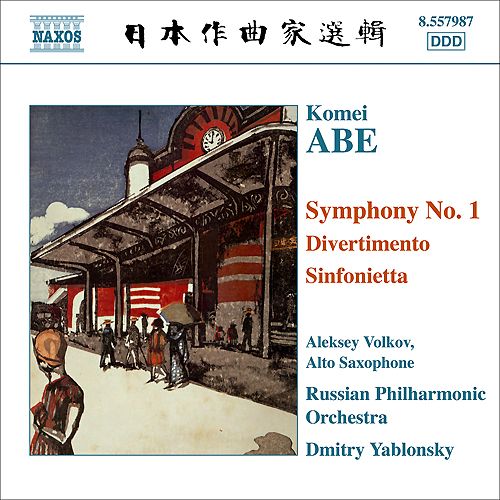
Music Composed by Komei Abe
Played by the Russian Philharmonic Orchestra
With Aleksey Volkov (saxophone)
Conducted by Dmitry Yablonsky
"Japanese composer Komei Abe�s music is firmly rooted in the Western tradition. This premi�re recording
of the short (18 minutes) three-movement First Symphony (1957) is full of invention and vitality, neo-classical
in spirit, with a whirlwind finale which employs, as the composer put it, �rhythmic ostinato by the steam
locomotive�. The Divertimento for Alto Saxophone was written in 1951 with piano accompaniment, and
was orchestrated in 1960. It is an attractive work, again, neo-classical in spirit, and tuneful, with a
quirkiness reminiscent of Prokofiev. The Sinfonietta dates from 1964 and is scored fro triple woodwind
and a wide range of percussion instruments. It starts off in an arresting manner, with robust sections
contrasting those of a more skittish nature, in a movement based on sonata form. The second movement
uses traditional Japanese colourings to good effect, while Abe�s �steam locomotive� returns both in the
following Scherzo (sounding like an out-of-control version of Honegger�s Pacific 231) and in the ensuing
lively finale which, like the second movement, employs Japanese colourings. Excellent performances
and good sound."
Penguin Classical Guide

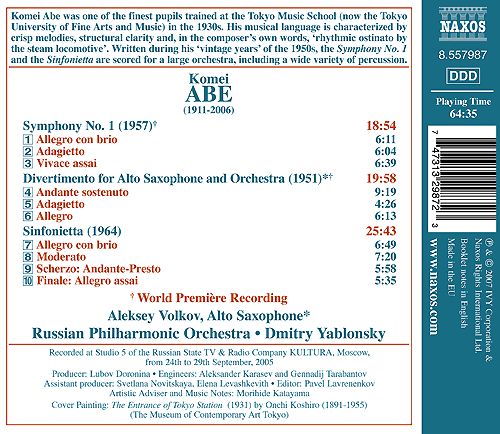
Source: Naxos CD (my rip!)
Formats: FLAC(RAR), DDD Stereo, mp3(320)
File Sizes: 295 MB / 148 MB (FLAC version incl. covers & booklet)
Download Link - [Click on the reputation button, leave a comment (or not) and PM me to get the FLAC link]
mp3 version -
https://mega.nz/#!WYpXUSaK!ylJpFz62g-5DMlQY1Aeuj080iHjZNUC3q2S8i9cdAbs
/>
Enjoy! Don't share! Buy the original! And please click on "Reputation" button if you downloaded this album! :)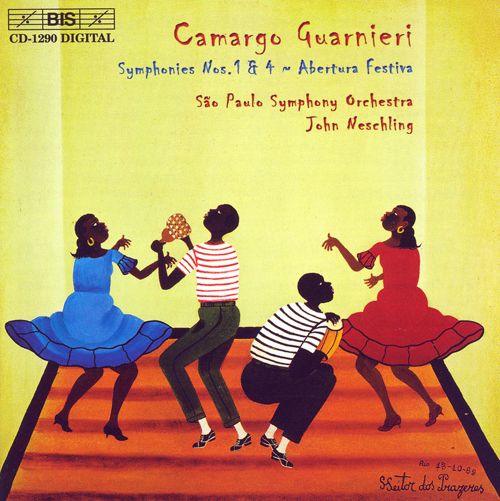
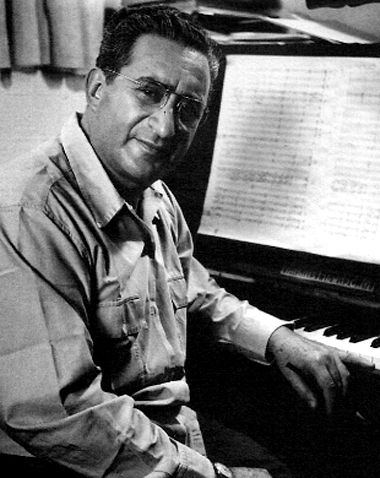
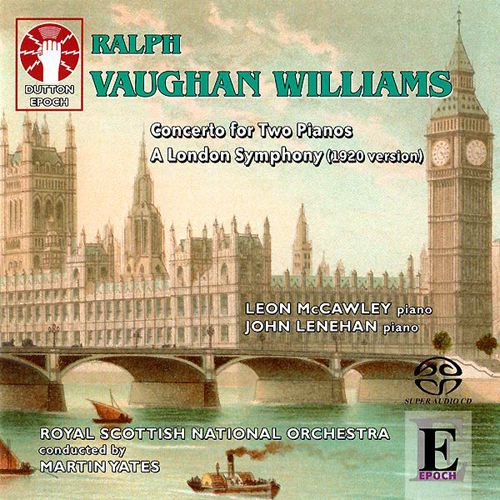
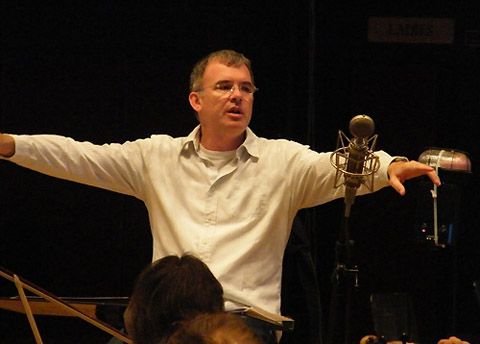
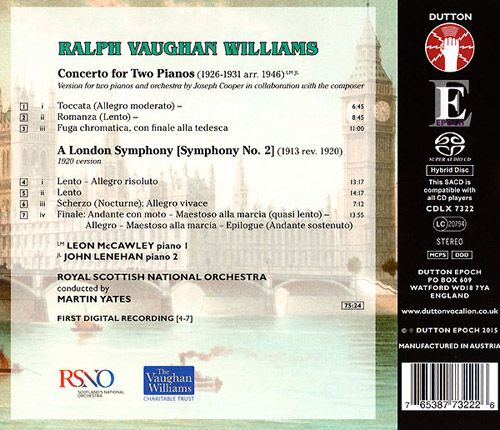
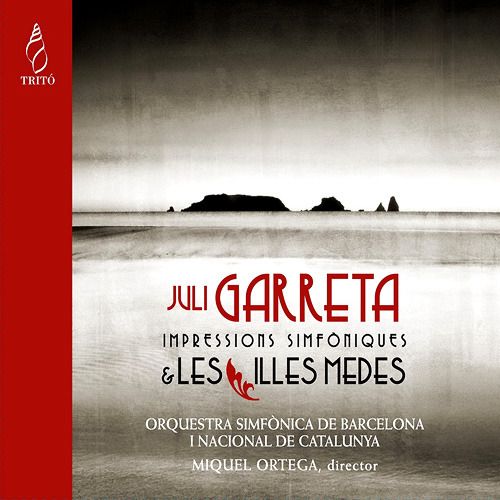
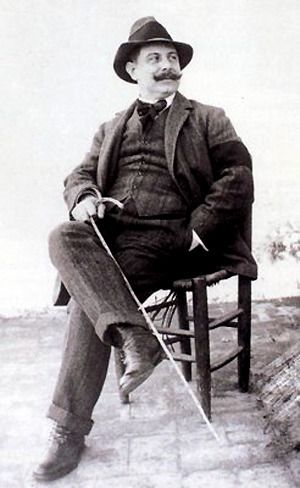
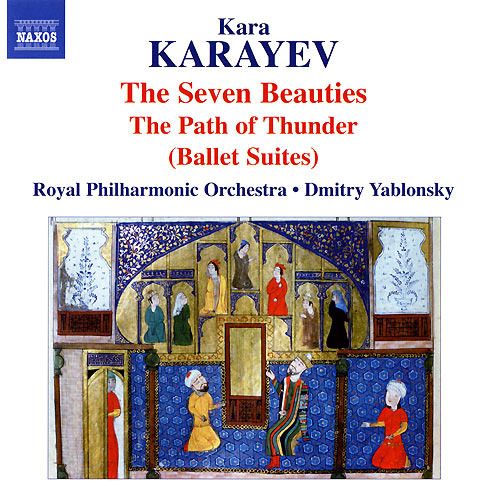
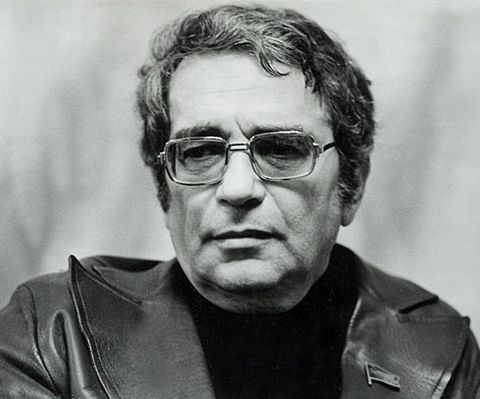
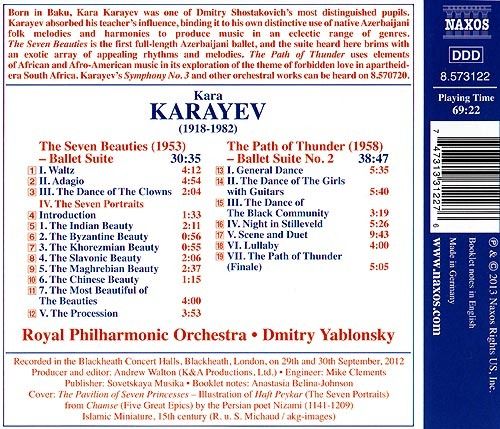
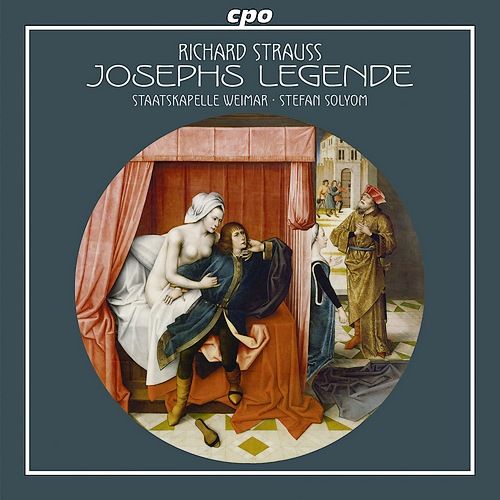
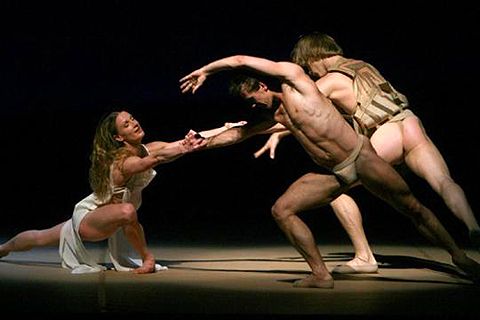




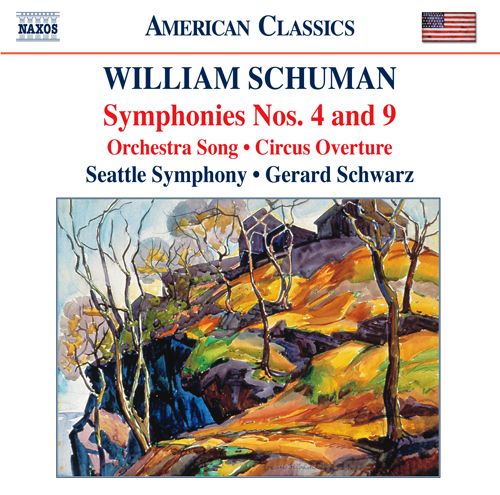

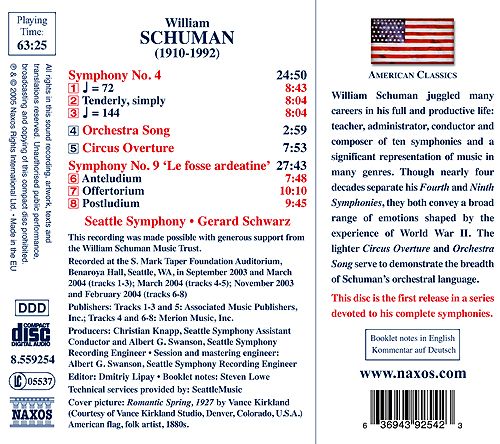
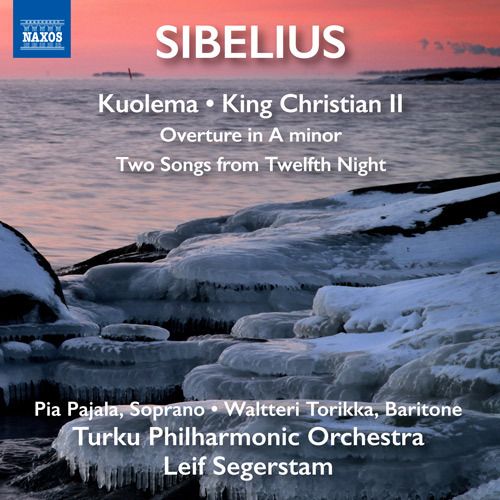

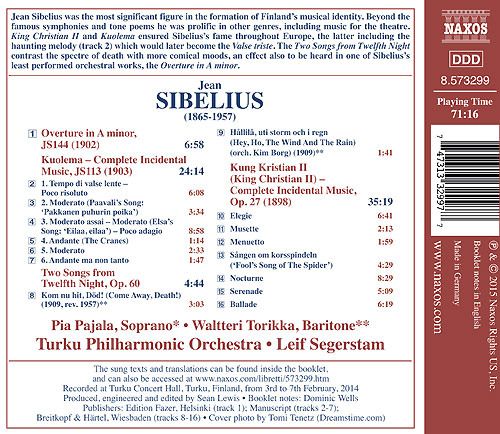



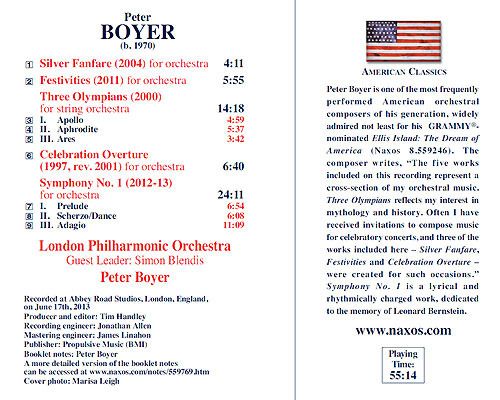
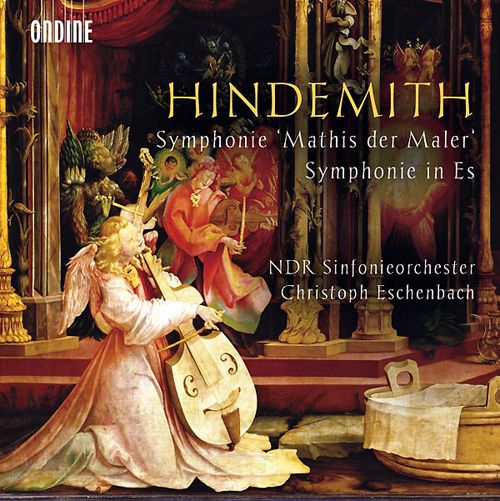

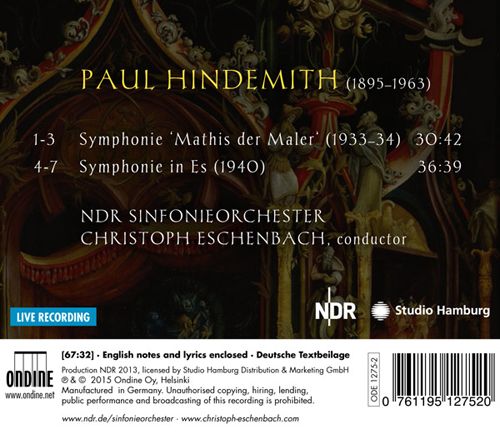
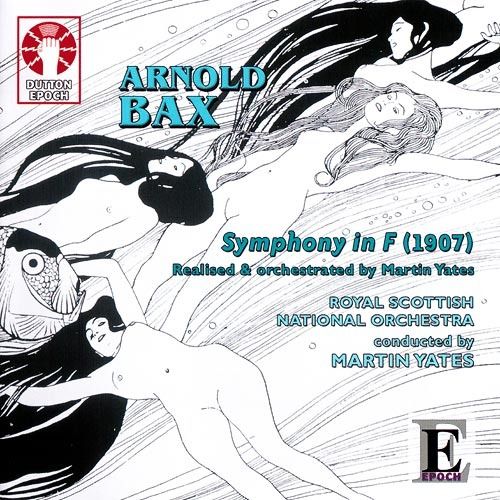
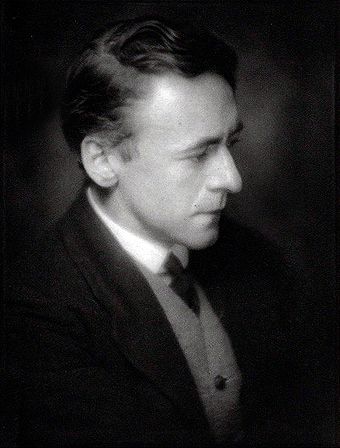
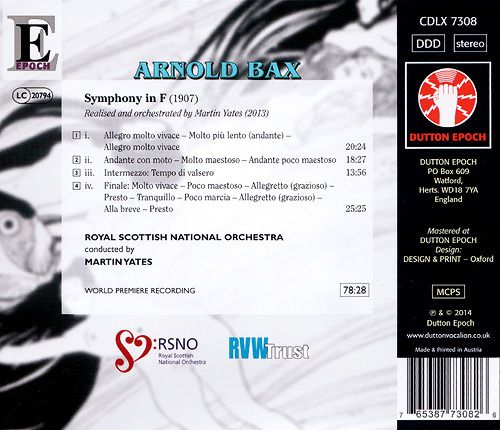




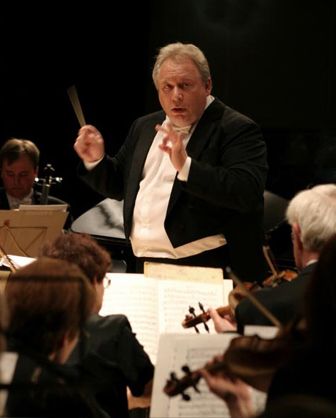






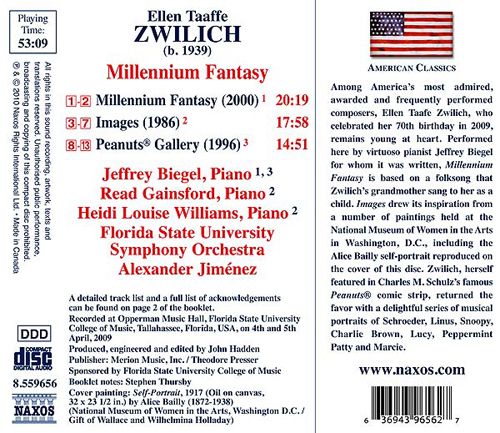



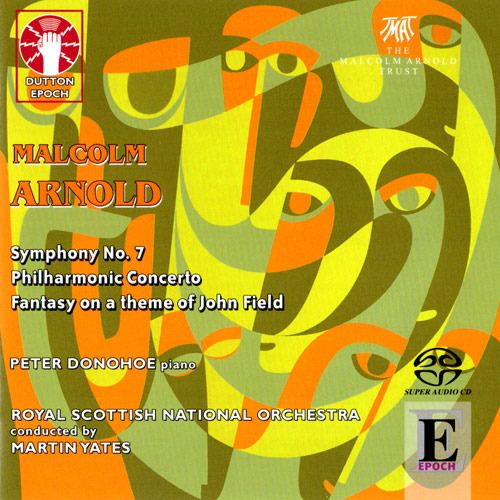
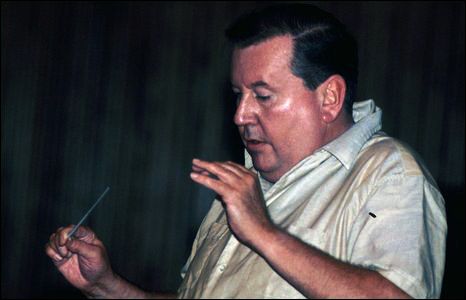


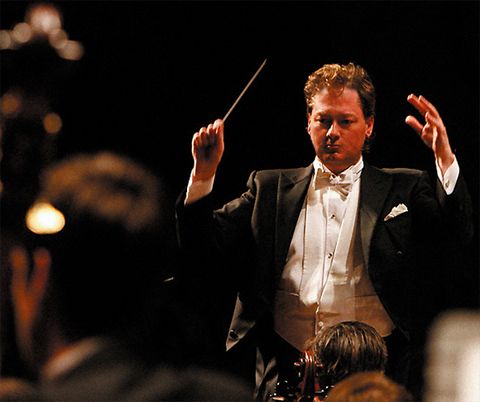

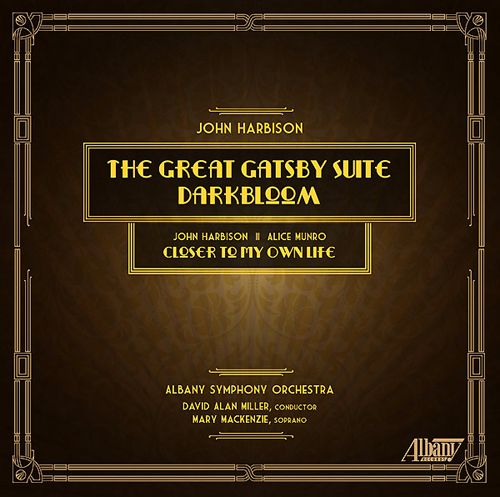
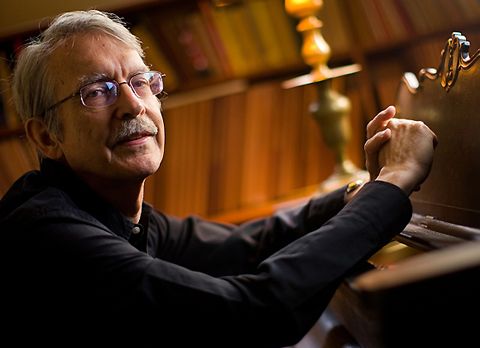
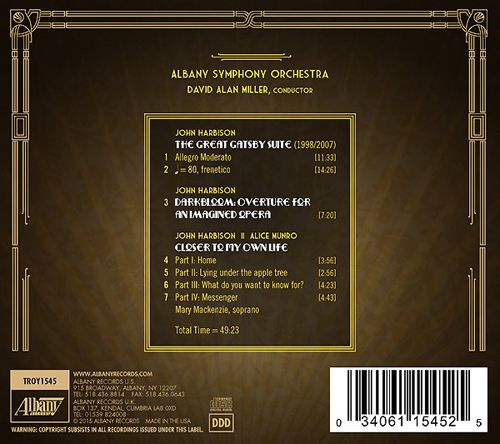
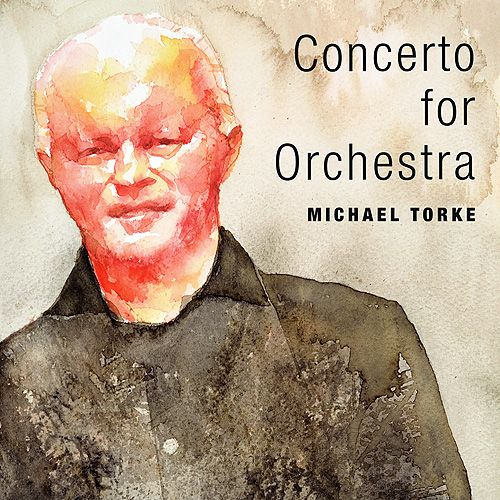
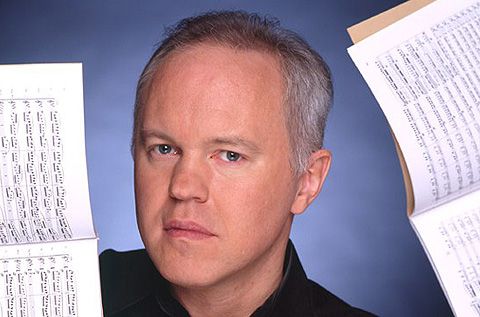
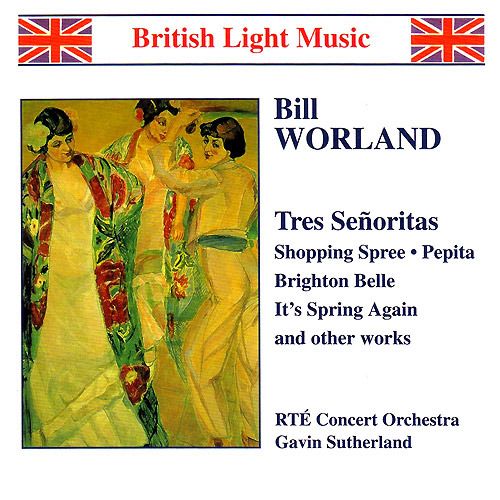
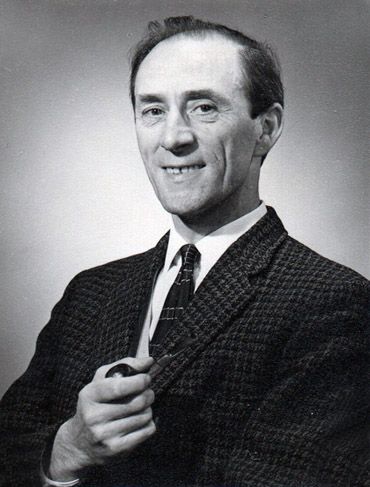
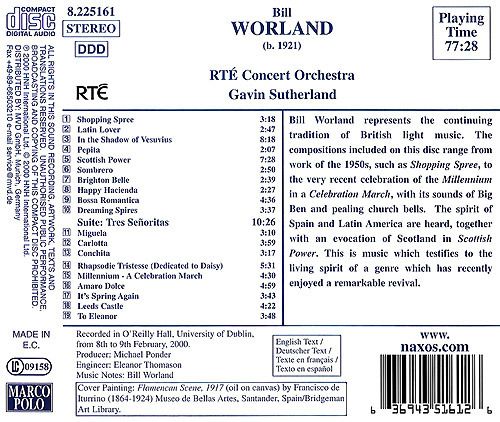
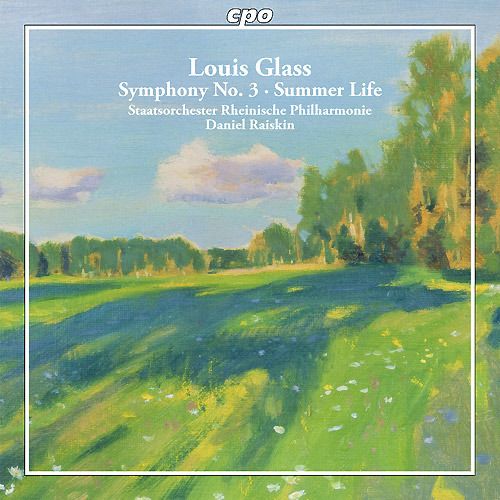
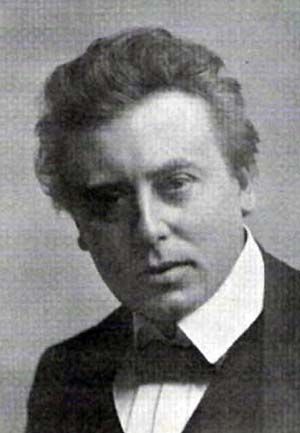

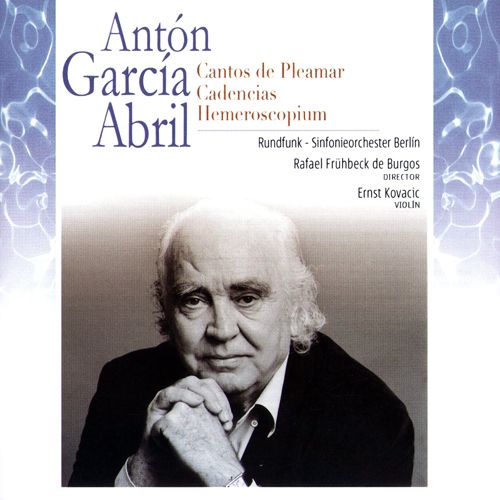

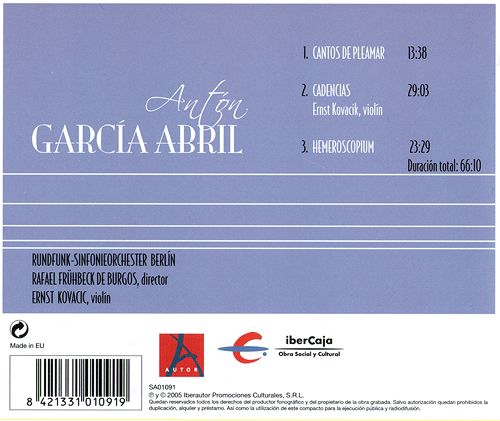






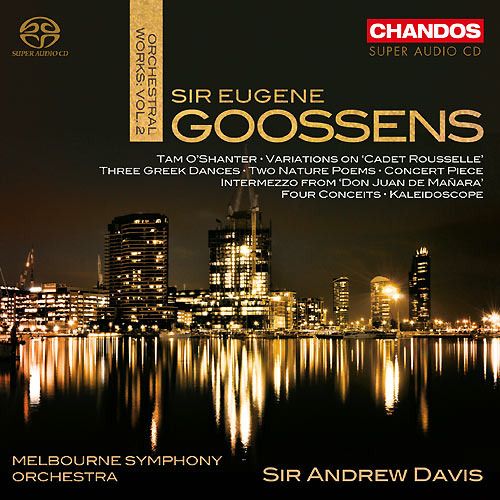

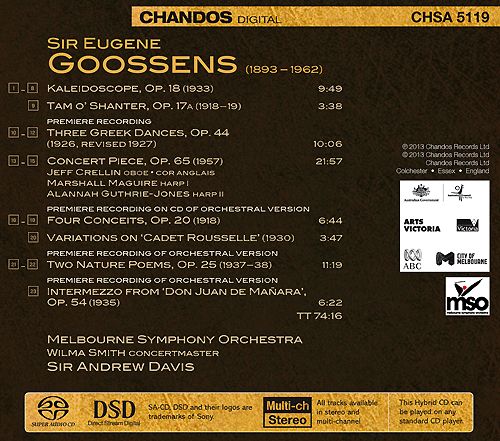
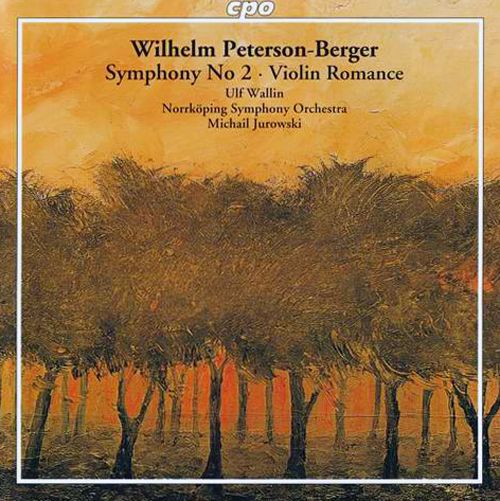
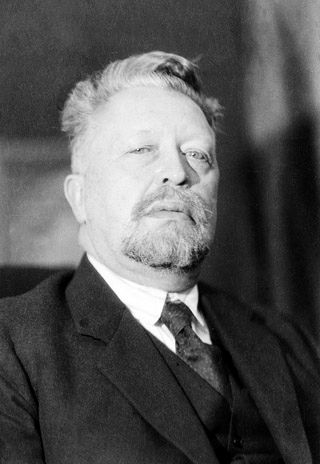


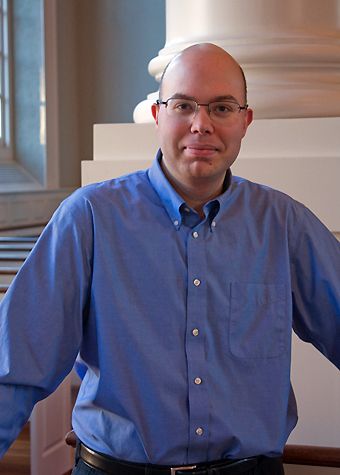
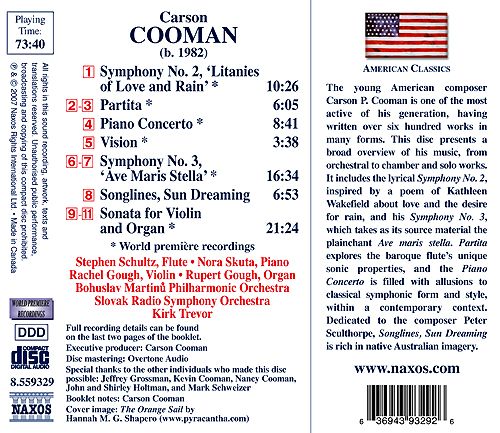
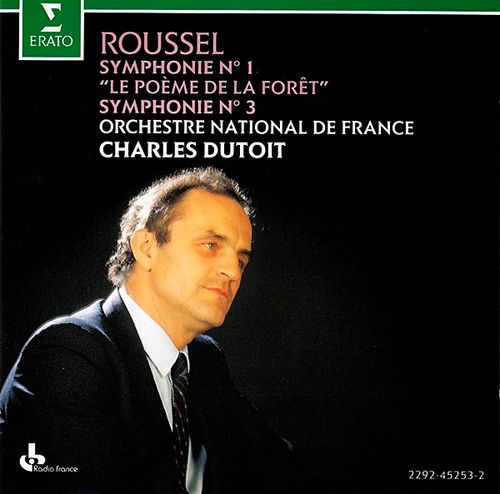
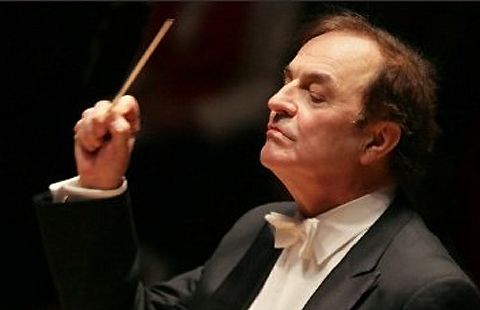


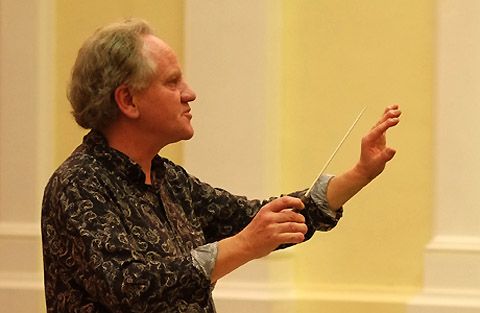
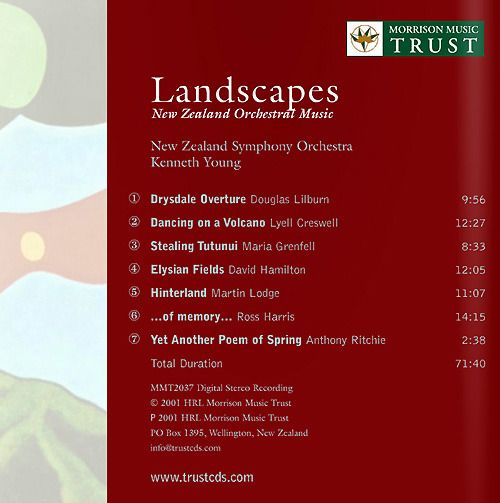
 (http://www.bilder-upload.eu/show.php?file=2787db-1451570770.jpg)
(http://www.bilder-upload.eu/show.php?file=2787db-1451570770.jpg) (http://www.bilder-upload.eu/show.php?file=d08892-1451570884.jpg)
(http://www.bilder-upload.eu/show.php?file=d08892-1451570884.jpg) (http://www.bilder-upload.eu/show.php?file=860a16-1451570924.jpg)
(http://www.bilder-upload.eu/show.php?file=860a16-1451570924.jpg)